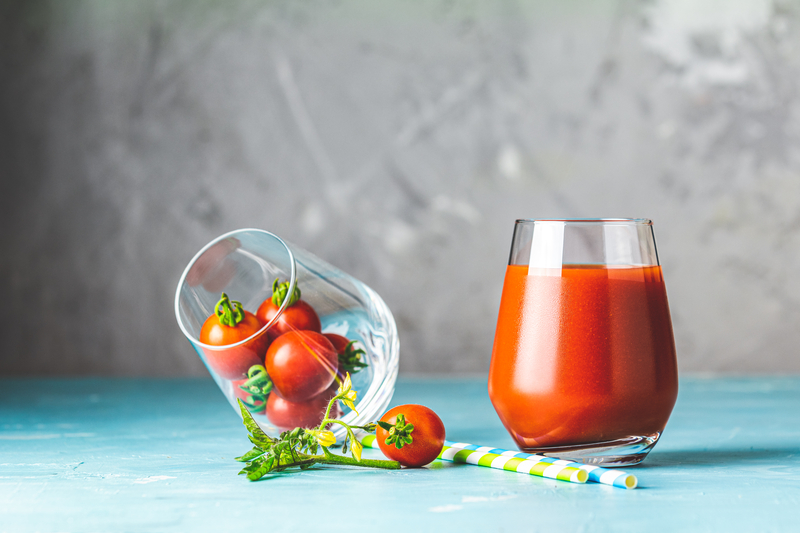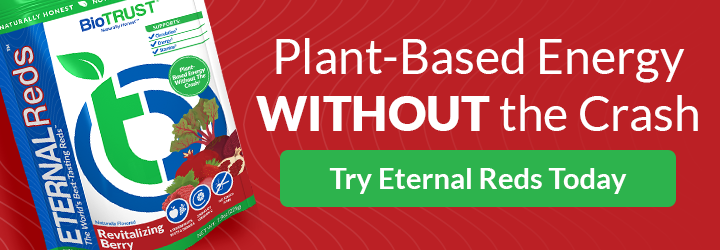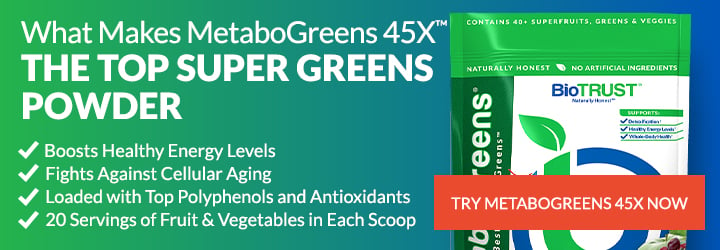Is V8 Healthy For You? Get the Facts Here

“Coulda had a V8!” If you remember this commercial, you might be one of the original drinkers of the veggie concoction, V8. According to manufacturers, V8 is the “original plant-powered drink.” Long before the energy drinks and green smoothies graced the front aisles of many grocery stores, V8 was the preferred healthy drink of choice. But, what about now? Is V8 still considered the healthy beverage it once was?
What is V8?
Let’s begin with a quick refresher on how V8 is made. While it may initially look like just plain old tomato juice, V8 is actually a combination of eight different vegetables. Yes, tomato juice is the most prevalent ingredient (making up about 90%), but it is accompanied by carrots, celery, beets, parsley, lettuce, watercress, and spinach to round out the recipe.
According to Campbell’s, the manufacturer of V8, tomatoes, the main ingredient, are grown in California, where they are then shipped to the processing plant in Napoleon, Ohio. Next, they are joined with the other vegetable ingredients and pureed together. Enter additional ingredients like potassium, vitamins A and C, citric acid, and a bit of salt into the mix, and you’ve created a unique flavor and healthful impact—voila—V8!
Is V8 Actually Good for You?
This question might be one of those that can be answered along a spectrum of good, better, and best. Yes, V8 can be a healthier choice when you look at the variety of options available to you in terms of quick fixes and fast nutrition.
That said, there’s no way around the fact that V8 is essentially a processed food since it goes through a manufacturing “process” and is pasteurized. But, all things considered, that doesn’t necessarily mean it’s all bad. What’s good about it? Well, there are several positives:
1. It’s convenient and neat—would 100% fresh, raw ingredients blended and consumed immediately be better than downing a V8? Yes, that would absolutely be better for you. But, for many folks who don’t have time to purchase, wash, cut up, and blend fresh vegetables, drinking a V8 might be a good alternative. No fuss, no muss.
2. It’s low sugar—when compared with other beverage options on the market, choosing a V8 over sugary sodas and other drinks can be a step in the right direction. With a mere 60 calories with 2 grams of fiber and 3 grams of protein, it is a healthier option.
3. It’s an easy way to get more vegetables into your diet—for those who detest veggies and just can’t seem to choke them down, drinking them might be the way to go. Plus, with the added vitamins A and C in one little can of V8, it’s not a bad choice for veggie haters who want to ramp up their overall nutritional profile. Then again, it also tastes of vegetables…
4. It’s better than plain tomato juice—because it contains eight vegetables instead of just one, some might argue that V8 is vastly superior to drinking regular tomato juice. You get all the benefits of tomato juice and a whole lot more bang for your veggie buck.
What are the Downsides of Drinking V8?
As long as you consume it in moderation, along with eating plenty of other whole, healthy, and fibrous foods, drinking a V8 here and there shouldn’t be a problem. But, there are a few things to keep in mind:
1. Most of the fiber has been removed—during the pureeing process and manufacturing of V8, the essential fibers you would normally get from vegetables are removed. Getting plenty of fiber in your diet is necessary for maintaining a healthy gut and preventing constipation. The bulk created from fiber also ensures you’ll feel fuller after eating and for a longer time than if you ate (or drank) foods without fiber content.
2. It has additives—yes, you’re getting some great veggies in this yummy drink, but you’re also getting some additives you may not have wanted. Look at the label, and you’ll see preservatives, flavors, and other additives that don’t come naturally from the farm.
3. It’s pasteurized—the process of pasteurization is positive in that it can kill bacteria, making juice safer to drink, extend shelf-life, and create a more consistent product. Unfortunately, the process can also destroy a large portion of the natural vitamins, enzymes, and other beneficial nutrients found in the original vegetables.
4. It’s reconstituted—V8 juices are from juice concentrates rather than from the original juice. This means the water is removed and then reintroduced. During this manufacturing process, other chemicals and flavors may be added as “incidental additives.” This can include propylene glycol, sodium benzoate, and glycerin, which aren’t required to be listed as ingredients.
5. It has added salt—while salt isn’t the villain many people fear, excess salt from processed foods can be problematic, especially if you are cutting back due to high blood pressure or for other health reasons. V8 contains 640 mg of sodium per serving, though there is a low-sodium version with just 140 mg.
Homemade V8 Options — The Preferred Method
You can use the same list of veggies contained in a can of V8 or mix and match to suit your needs and tastes. And don’t forget to try out some cool flavor additions by spicing it up with a little Red Hot, a dash of pepper, maybe some lemon pepper, some lime, or even some chopped up fresh ginger. All in all, you can’t go wrong with many fresh flavors, no matter how you spin it!







